December 2020
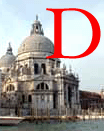
ecember saw your webmaster adding to the site's new section on historians and historiography large selections of Thomas Babington Macaulay’s survey of historians from Herodotus, Thucydides, and Tacitus down to modern authors in which he argues for the superiority of nineteenth-century approaches. Landow also worked with our frequent contributor, Lionel Gossman, the M. Taylor Pyne Professor Emeritus of Romance Languages, Princeton University, creating a homepage and section for the great French historian, Jules Michelet, which includes a chronology plus “Jules Michelet: A Pioneering French Historian in Victorian England.” Prompted by Andrew Midkiff’s suggestion, Landow transcribed a fascinating 1853 article on a London sawmill complex that exemplified changes wrought by steam-driven machinery on everything to hats, horse-drawn cabs, and sailing ships.
In addition, Landow has continued working with Philip V. Allingham on his Dickens and illustration project, which now includes the work of both the early illustrators — Phiz, George Cattermole and Daniel Maclise — and later ones, including Harold Copping Felix Darley, Sol Eytinge, Charles Green, Harry Furniss, William Groome, and Thomas Worth. Now, on to Barnaby Rudge.
A year-end census of the Victorian Web’s 115,612 documents and images shows that the site is predominantly devoted to the visual arts. Architecture, Decorative Arts, Mosaics, Stained Glass, Painting, Sculpture, Graphics, and Photography have 79,272 items and Literature 15,100. Literature includes material in the sections on Authors, Periodicals, and Genre among which are 43 published books, both scholarly and primary texts. The section on Political and Social History contains 5,627 documents and images while Religion has 610 items, among which are two previously published books and a large number of primary texts, such as sermons and tracts. The sections for Science and Technology have 1,008 and 2,332 items. Some areas seem misleadingly small — Philosophy (173), Economics (67), Genre (363), and Gender Matters (363) — because material relevant to them appears in the large sections for authors, history, and the visual arts. The sections on John Ruskin and John Henry Newman, for example, contain discussions relevant to religion, genre, economics, and social and political history. Nonetheless, Victorian Web clearly needs more material on Gender Matters and Economics.
Jackie Banerjee completed some work with Rita Wood on architecture and ironwork in York, opening a new section on the busy partnership of J. B. and W. Atkinson there. In connection with another building in York (22, Parliament Street), she added a short essay of her own on glass, particularly plate glass, to our iron and glass section. After that she added a new painting by Whistler, Nocturne in Grey and Gold, Chelsea, and expanded and illustrated a review published earlier this year in the TLS, on Pauline Rose's Working Against the Grain: Women Sculptors in Britain c. 1885-1950. Turning to Thomas Hardy, she wrote an essay on his career as an architect, focusing on three of his poems that are set in churches. This entailed writing short pieces on the Minster Church, Wimborne; St Juliot (the church in Cornwall where he met his first wife, Emma); and another piece on the scenery in and around the Valency Valley there, the setting for A Pair of Blue Eyes.
Diane Josefowicz contributed “Among the Rhododendrons,” a Review of Elizabeth Hope Chang's Novel Cultivations: Plants in British Literature of the Global Nineteenth Century.
Rita Wood, who has become a regular contributor, sent in some new work by the architectural partnership of J. B. and W. Atkinson in York, including the former York County Hospital, and other fine listed buildings in York, like Heworth Grange. She also sent in some photos of ironwork, for example, of one of the elaborate lamp-posts at the entrance to the hospital, by William Walker — said to be York's best-known ironmaster.
Many thanks to Professor Antoine Capet for sharing with us a review of Neil McCaw's Historical Dictionary of Sherlock Holmes.
Olu Ladeinde, Production Coordinator on a Channel 5 documentary, writes to inquire about using our essay on the Railway Panic of the 1840s, and Sam Raffal, director and co-producer of The Signalman, an adaptation of the classic Charles Dickens short story, writes to inform our readers of its livestreaming coming up on Thursday, 17 of December at 7.30pm (GMT or 2:30 American Eastern Standard Time). Similarly, Gay Mohrbacher, Senior Project Manager at WGBH, announces “the Victorian period drama Miss Scarlet and The Duke premieres on PBS Masterpiece on Sunday, January 17, 2021 at 8pm/7c. Kate Phillips stars as the headstrong, first-ever female detective in Victorian London.”
Thanks for Dominic Lane who wrote providing additional information about the publishers Gowans and Gray.
November 2020
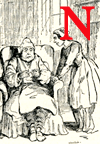
ovember began with your webmaster adding an 1871 article in Macmillan’s Magazine attacking Gothic and other revival styles by James Fergusson, which led to creating a section on Saracenic architecture, since Fergusson mentions it in passing. As in previous months, Landow continued working with Philip Allingham on the book illustrations of Phiz to which have been added additional ones by Harry Furniss, Sol Eytinge, W. H. C. Groome, and others. In addition, Landow has transcribed and added selections from Thomas Babbington Macaulay’s essays in the Edinburgh Review on Lord Byron, the death of Charles I, the character of Charles II, Cromwell and Napoleon as Military and Political Leaders. Finally he added the complete text Macaulay’s argument for granting English Jews full civil liberties.
This month started bleakly with the announcement of a new lockdown in England, but just before that Jackie Banerjee enjoyed visiting "Turner's Modern World," the new exhibition at Tate Britain, and wrote a review of it. A must-see, if you can, for December! This involved adding some new paintings by Turner, including one of her favourites, The Chain Pier, Brighton and (for comparison) one of the Chain Pier by Constable too. Working with others (see below), she added several new works by Dante Gabriel Rossetti, such as the magnificent Astarte Syriaca, and several new buildings in Glasgow by Alexander "Greek" Thomson, such as his impressive Holmwood House. Later work included a new section on Thomas Hosmer Shepherd, the prolific topographical artist whose scenes of London and other cities, and sometimes of rural areas, provide a brilliant record of the earlier part of the age, but often go uncredited.
Simon Cooke wrote a very welcome and well-illustrated account of James McNeill Whistler as an illustrator. This was followed by a new, more thorough and informative essay on Edward Burne-Jones as an illustrator, with several of his illustrations, and a brilliant discussion of "'Significant Pictures' and Sensationalism," in the work of Joseph Sheridan Le Fanu.
Tim Willasey-Wilsey contributed photographs and captions for the Memorial to Frances Herbert, Vicountess Nelson, Duchess of Bronti by Peter Turnerelli.
Jo Devereux reviewed Elizabeth D. Macaluso’s Gender, the New Woman, and the Monster.
Lionel Gossman's latest project is on Alexander "Greek" Thomson: he contributed a fine introduction to his life and work, which enabled us to open a new (and long overdue) entry for "Greek" Thomson in our architecture section. Many thanks to Laura Stevenson and Evan Macdonald of the Glasgow City Free Church for helping here, with extra photos and information about Thomson's one remaining church.
We're so pleased to have Sarah Doyle's poem, Impressions of Jane, set alongside the five Rossetti paintings that inspired it. This was originally published in The Pre-Raphaelite Society Review, so we are especially grateful for the chance to include it here. Also, from another new contributor, Geri Walton, we now have an account of the once popular but long-vanished entertainment venue, the Cremorne Gardens in London.
Katy Owen, a PhD Candidate at the University of Birmingham, writes with a fascinating correction: more than one person named William Morris worked in the decorative arts, and the 'Briar Rose' pendant and chain The Studio attributed to the famous William Morris was actually by another man with the same name. After the webmaster invited her to help create a section on Awdry, Owen sent in a biography, 9 images, and captions for them. Thanks also to Pisak-Lukáts János of the Sapientia Hungarian University of Transylvania Tg Mures, Romania, for correcting a date in the document on Fourier. Diann Benti writes to point out that the New York Public Library’s identification of a photograph as Frances Trollope must be incorrect since “the timing of her life doesn't align with the age of the sitter and the timeline of photographic technology.” We've removed the image, replacing it with an engraving from the National Portrait Gallery, London. Thanks also to Lesley Burch at the Open University for spotting a mistake in the birth-date of Sir Alfred East in our paintings section.
October 2020
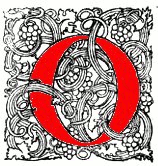
ctober began with your webmaster adding excerpts from a 1901 Blackwood’s article on the origins of the Chinese Opium Wars that apportions blame to the East India Company and the British and Chinese Governments. Next, prompted by Ruth Richardson’s “Florence Nightingale's Illness and How It Aided Her Contributions to Medical Care & Public Health,” he put online one of his essays from three decades ago — “Aggressive (Re)interpretations of the Female Sage: Florence Nightingale’s Cassandra” and created a homepage for Nightingale in our section on public health.
Philip V. Allingham, Contributing Editor, Canada, continues his massive illustration project, adding dozens of images and commentaries on Dickens’s Old Curiosity Shop by Phiz and a half dozen other illustrators. He has also added 54 illustrations by Thomas Worth and commentaries for a dozen of them plus 20 illustrations by Harry Furniss.
Jackie Banerjee recently reviewed Penny Harris's new book on Robert Owen and the Architect Joseph Hansom, an "unusual co-operation," as she terms it in her subtitle, between the social reformer and a young, up-and-coming architect. She also added a new page on St Thomas's Cathedral in Mumbai, and George Gilbert Scott's fountain just outside it — both of these with the help of photographs by Patrick Carson. Patrick's photos also enabled her to write a tiny bit more (not enough!) about the Irish sculptor Thomas Farrell, and his (and the metal-worker Thomas Potter's) work on the Wellington Testimonial in Dublin. After that she worked on a longer project about animals in Victorian times, seeing how they were involved in everyday life — as pets, in zoos, menageries and circuses, as subjects of study, as part of the workforce, and as subjects of humanitarian concern. In the course of this, she wrote some short pieces, one about Hogarth's depiction of The Second Stage of Cruelty, one about The Charge of Scarlett's 300 or Heavy Brigade at Balaclava 25th October 1854, and another about G. H. Thomas's illustration of Mrs Gatty's The Law of Authority. Later in the month, by kind permission of Professor Antoine Capet, she added her review of Zoë Thomas's Women Art Workers and the Arts and Crafts Movement, which first appeared in Cercles.
Simon Cooke, our Books editor, has written two more of his well-researched and sensitive essays, one about the illustrator Celia Levetus and the other about the illustrations of Georgie Gaskin. Levetus is one of those talented but almost forgotten women associated with the Birmingham School of Illustrators. Gaskin is better known for her jewellery and metalwork, but her exquisite illustrations (such as this one) are often overlooked.
Rita Wood has now given us an excellent picture of the architect Edward Taylor's work in York and the surrounding area, adding his Heworth Methodist Church and Easingwold Town Hall, both very attractive buildings. Interesting features outside the town hall are a memorial fountain and a canopied market cross.
Thank you to Antoine Capet, reviews editor for the online journal, Cercles, for sharing with us Professor Anne Brunon-Erst's review of Chris Barker's Educating Liberty: Democracy and Aristocracy in J.S. Mill's Political Thought, and Professor Yann Theloniat's review of Clara Dawson's Victorian Poetry and the Culture of Evaluation.
Special thanks to Ash Nallawalla for pointing out some confusion about Elphinstone College in Mumbai, which quickly moved from its original building to another nearby. It was hard to sort out, but especially good to know, because one of the architects of the latter was the Bombay-born Parsi, Khan Bahadur Muncherji Cowasji Murzban. A memoir of Murzban's life gives a fascinating insight into that period in Mumbai.
Many thanks also to Francoise Baillet and @PunchBooks, for identifying this cartoon from Punch as one of Gerald Du Maurier's, and to Simon Knott for correcting the location of a lovely relief by E. M. Rope. Twitter is a wonderful medium for fact-checking!
September 2020
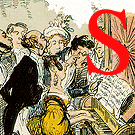
eptember began with your webmaster finding, formatting, and putting online attacks by the Quarterly Review on the British government’s bloody engagements in Egypt and the Sudan: “There was no enemy, and no war, but we had to fight”: Gladstone's Ministry & Egypt” and “Gordon’s Actions in Egypt and the Sudan, Particularly Regarding Slavery.” Continuing to add and then link to one another varying view points expressed in Victorian periodicals, Landow then added excerpts from the Edinburgh Review, including “‘The Most Pressing Difficulty of the Day’: The Situation in the Sudan,” “Justifying England’s Actions in Egypt,” and “Egypt’s Debts in 1884,” and one entire long article from from Blackwood’s Edinburgh Magazine, ““Fanaticism in the Soudan” plus an excerpt, “‘The Policy of England in Egypt Has Been a Gigantic and Fatal Error from Beginning to End’” and, for a change, something that has nothing to do with the empire — ““Morris & Co. and the Arts Under Socialism.” Throughout Patrick Leary has generously provided essential assistance by identifying authors of these anonymous articles from his copy of The Wellesley Periodical Index as well as making valuable corrections. Leary’s identifications have led to the site’s adding biographical material for the author of one of these anonymous articles, who turns out to have been a swashbuckling former naval officer, Augustus Charles Hobart-Hampden (1822-1886), adviser to the Sultan of Turkey who became known as “Hobart Pasha.”
At the very end of last month, Jackie Banerjee completed a review of Alec Hamilton's new book, Arts & Crafts Churches, which has a wide-ranging introduction and a gazetteer packed with illustrations (including photographs from one of our own contributing photographers, John Salmon). She then wrote an introduction to the life and work of the landscape-painter Benjamin Leader Williams, and added a number of his paintings, including his well-known February, Fill Dyke. Following on from this, her review of The Invention of the Modern Dog: Breed and Blood in Victorian Britain prompted her to open a new section on Victorians and animals, to which she added several pieces from contemporary sources — about the 1874 Birmingham dog show, and two prominent dog-fanciers, Sophie Duleep-Singh and the Duchess of Newcastle, as well as a contemporary account of the illustrator Harrison Weir.
Our editor for book illustration and design, Simon Cooke, contributed another of his excellent essays on an illustrator, this time the chromolithographer W. R. Tymms. He later added another book binding designed by Tymms, this time for Byron's popular The Prisoner of Chillon. He followed that up with an essay on Tymms's work in designing book bindings. This was a case where attribution required a very specialized knowledge of style, publishers' practices and so on. Simon's next piece was an essay on illustrator Florence Rudland, best known for her illustrations to a later edition of Mrs Sherwood's well-known The Fairchild Family.
Andrzej Diniejko, our Contributing Editor from Poland, contributed “Thomas Hardy's Far from the Madding Crowd: A Pastoral Tinged with Tragedy,” and Tim Willasey-Wilsey, Editor for Military and Colonial History, contributed “Monument to Lt-Col John Nugent in St. Thomas's Cathedral, Bombay” and “Those Who Died in the Wreck of the Alexander on the English Coast.”
Rita Wood contributed photographs and commentaries for two Yorkshire churches rebuilt by R. D. Chantrell: St Martin's, Fangfoss, and St Catherine's, Barmby Moor. A family connection with Minton meant that tiling is a special feature in these churches. So far we have the tiles at St Catherine's, which include a memorial tile to Herbert Minton himself.. Another set of photos and accompanying text resulted in a much fuller entry for architect Edward Taylor's best-known building, York's Art Gallery.
Patrick Leary, Founder and Editor of the discussion list Victoria, shared two previously published essays with us: “A Victorian Virtual Community [Notes and Queries]” and “How the Dickens Scandal Went Viral.”
James Spates contributed “Van Akin Burd: The Last Interview,” and Mary Millar shared “‘You Dirty Boy’: A Rare Victorian Political Cartoon.” Dr. Brent Shannon Associate Professor, Department of English at Eastern Kentucky University, shared his list of 98 university novels to which other members of Victoria added a few more. Deanna McCombs sent in additional photographs of stained glass by Burne-Jones in the chapel of Harris-Manchester College, Oxford, including the Faith & Prophecy, Charity & Mercy, Justice & Humility. Prayer & Inspiration windows. Michael Williams added three more essays to his puerperal (childbed) fever project: “Contrasting Epidemics: Puerperal Fever and Cholera,” “Puerperal Fever: Fog and Filthy Air.” and “Puerperal Fever: Overcrowding and Effluvia.”
A new contributor, Patrick Carson, has offered us some wonderful material from his two privately printed books, one on Bombay and the other on Thomas Potter, a metalworker who provided fine ecclesiastical and secular work for two of the major architects of the age, George Gilbert Scott and G. E. Street. The Potter book has allowed us to expand several older entries, for example, on the Law Courts' clock (the spectacular case was made by Potter!), and Christ Church Cathedral (the equally spectacular chancel gates were Potter's too). Sir Matthew Digby Wyatt's Chatham Barracks Memorial Arch, also with gates by Potter, was another addition. As for Patrick's Indian material, the first piece online is not in Bombay but in Kerala, the picturesque Holy Trinity Church, Idaiyangudi, Tinnevuly, with its important architect/missionary, Robert Caldwell, still honoured in S. India for inspiring the Tamil Renaissance.
Thanks to Gavan Tredoux, who edits a Francis Galton website, for providing the correct page numbers of an anonymous 1867 review of Darwin’s The Origin of Species.
August 2020
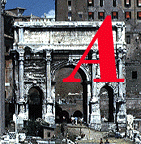
ugust began with your webmaster once again drawing upon the treasures of the Hathi Trust Digital Library and The Internet Archive to create a section on Egypt based upon the 1856 Imperial Gazetteer, which provides context for Tim Willasey-Wilsey’s “St Mark’s Anglican Church” and “Misr Railway Station, Alexandria, Egypt.” Landow wrote The Utilitarian Theory of Economic Imperialism, or Empire as Auxiliary, Britain’s Inadvertant Destruction of Turkish and Egyptian Rulers, and The Bear’s Shadow: Russia and Victorian Britain’s Foreign Policy. The new section on Egypt also provides a center for much of our material on Egyptomania and on painters, such as David Roberts, J. F. Lewis, and Frederick Goodall. In addition, Landow added 25 of Francis Frith’s photographs of Egypt, some of which now appear in the articles derived from the Gazetteer.
A second stage in the Egypt project began with the realization that the 1842 Encylopædia Brittanica has a massive article on the history and contemporary politics of that country — 100 double-columned pages of fine print. The Brittanica’s Egypt provides us with an invaluable time capsule of early Victorian understandings of the country that remained the center of British foreign policy for the second half of the nineteenth century and beyond. Here are a few of the many excerpts from the Brittanica and articles based upon it: “France’s Egyptian Strategy from Louis XIV to Napoleon and After,” “Napoleon Explains Three Reasons for the French Invasion of Egypt,” ““An Expedient Which Wisdom and Humanity Must Alike Condemn”: the British Destroy the Protecting Banks of the Nile,” “Ibrahim, Ali Bey, and Mohammed Bey — Three Successive Egyptian Rebel Rulers,” “Mehemmed Ali’s Civic and Economic Reforms,” “Mehemmed Ali and the Egyptian Army in the 1840s,” and “Russia Unexpectedly Obtains a Foothold in Turkey” and “The Rise, Fall, and Rise of the Mamlukes and the Creation of the Ottoman Empire’s Supreme Porte.”
The month’s final additions to the Egypt-Sudan project took the form of adding material from Victorian periodicals, the most important parts of which were the weekly bulletins on the Nile Expedition to rescue General Gordon in The Illustrated London News, their four dozen illustrations of that operation, and “England in Egypt,” a long article from The Westminster Review. The Graphic provided a few dozen more illustrations about the Sudan, and The Westminster Review some interesting excerpts, including a reviews of books about Gordon written shortly after his death, and a scathing account of the disorganization and poor planning of the Sudan expedition “By an Officer Who Was There)
During the sweltering early days of August, Jackie Banerjee finished making a small gallery of Frances Burney photographs, some of which, like that of St Michael's, Mickleham, relate to the Victorian period too: St Michael's was the church in which both she and George Meredith were married. She then added some new material about the Scottish artist William Strang, including Herbert Furst's 1917 International Studio article about him, and some new works. These included a self-portrait, and the allegorical Adoration, which might strike us as rather creepy now. After that, Simon Cooke's latest brilliant essay (see below) introduced her to the illustrations of several Birmingham artists, such as Georgie Gaskin and Celia Levetus, for whom she wrote very brief introductions. She also added an article about Levetus by H.W. Bromhead from the Art Journal (1900), and an extra few illustrations of her work. Her favourite among these was The Angel for Blake's Songs of Experience. Working with Rita Wood on Victorian York (again, see below) proved equally inspiring, and here she added an essay on the Yorkshire Fine Art and Industrial Exhibition of 1866.
Later this month she opened two new sections. One was on the artist Lucien Pissarro, his paintings, wood-engravings and the Eragny Press, established in London with his wife Esther. The other was on the architect James William Wild, and (with the help of John Salmon's brilliant photographs) his introduction of polychromy in church-building at Christ Church, Streatham. She found pictures and articles about the opening of two of his other buildings, St Martin's Northern Schools and the Museum of Childhood in Bethnal Green, in contemporary issues of the Illustrated London News. She also added a brief introduction to Godwin of Lugwardine, the firm that made tiles for many of the important Victorian churches and public buildings.
Simon Cooke's latest, on the Birmingham School of Illustrators, is an exciting addition to our already very well stocked section on Victorian illustrators, especially since it includes some talented but overlooked women illustrators. This big and intricate enterprise features some new title pages, such as this one for Renaud of Mountaubon by Fred Mason, and bookbindings too, like this one by Mason for the same book.
In addition to his essays about Alexandria mentioned above, Tim Willasey-Wilsey contributed “The Twilight of the East Indiamen,” “The Wreck of the Alexander on the English Coast (1815),” and “New Passages to India.” Ian Mcleod’s essay about a battle in the Sudan — “‘You Broke the British Square’: The Battle of Tamai, 13 March 1884” — then led to Landow first creating a section on Suez and the Suez Canal and then one about the Sudan that features not only material from Victorian gazetteers and encyclopedias but also three dozen articles and illustrations from the 1885 Illustrated London News.
John Salmon's photographs of J. W. Wild's Christ Church, Streatham, already mentioned, included some beautiful ones of stained glass windows, a set by the architect J. F. Bentley, and a pair of really wonderful ones by Walter Crane: The Widow of Nain and The Charge to Peter.
Rita Wood's recent contributions from York have focussed on the architect Edward Taylor, and at the end of last month she dug into archives to bring him to life for us, with work (for example) on "The Sycamores," a pair of semi-detached houses he designed for himself and his father. Another of her welcome contributions is an attractive former Chapel on Peckitt Street, York, demonstrating the kind of fine work being done there. Then Rita went exploring and sent in a batch of splendid photographs of the architect G. E. Street's St Andrew's, Weaverthorpe, again with her own commentary.
James Spates added two valuable tributes to earlier Ruskin scholars — “The Superlative Scholarship of Helen Gill Viljoen” and “Van Akin Burd: A (Mostly Inadequate!) Tribute.”
Deanna McCombs, a new contributor, sent along a series of photographs of stained glass by Burne-Jones in the chapel of Harris-Manchester College, Oxford, that included the west window emphasizing the Evangelists, the east window featuring angels and the nativity, and the wonderful Days of Creation windows.
Thanks to Geri Giebel Chavis, Professor Emerita, St. Catherine University in St. Paul, for sharing a section of her forthcoming Routledge book, Peril and Protection in British Courtship Novels. Thanks, too, to Gordon Brackstone for correcting an error in the biography of Frederick Robinson, Viscount Goderich and to Shana Mendelson and her Junior Scouts for suggesting on online source of material about the history of costume. Thanks also go to Tim Mcgee for pointing out that one of the images of a Rossetti drawing was reversed!
David Lawrence of Kingston University London write with the sad news that Stuart Durant, one of our contributors, has died.
July 2020
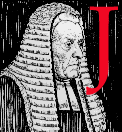
uly began with your webmaster adapting two books for the site: Lionel Gossman’s From Expulsion to Emancipation: Jews in England 1290-1858 saw completion, and Susan Matoff’s Conflicted Life: William Jerdan, 1782-1869. London Editor, Author, and Critic is also online. In the course of preparing both volumes, Landow added many portraits thanks to the National Portrait Gallery. Extracting large parts of Matoff’s book about Letitia E. Landon, he created a section in the author directory, adding biographical essays, including “Letitia Landon’s Public Persona,” “Landon Almost Marries John Foster,” and “Landon’s Mysterious Death — Murder, Suicide, or Accident?.” In addition, Matoff provided discussions of her poetry, fiction, and editorial work: “Letitia Landon’s Public Persona,” “ Landon’s takes over book reviewing for the Literary Gazette” and “Landon Edits and contributes all content to the Drawing-Room Scrap Book, 1832-1839.” Next, drawing upon the Hathi Trust’s riches, Landow transcribed 32 poems from the 1839 edition of her works.
With lockdown restrictions easing here, Jackie Banerjee has been dreaming of holidays, continuing her work with Colin Price on seaside piers, but with many more to go. She also opened a new section for Ruskin's friend and follower W. G. Collingwood, and, with John Salmon's photographs, added St James, Bushey High Street, Herts, where the editor of the Literary Gazette, William Jerdan, was buried. Then, she turned to the artist Keeley Halswelle, after coming across an account of him in some early journal material, and some of his paintings, including Welcome Shade and Green-Robed Senators.
Tim Willasey-Wilsey, our editor for Military and Colonial History and Visiting Professor at King's College, London, contributed “Victoria College, Alexandria, Egypt.”
Many thanks also to Rita Wood, for her contribution (both photos and commentary) on 10-10A Stonegate, York, with its wonderful tiled façade and fine woodwork — also for her material on the architect who carried out the Victorian restoration, Edward Taylor.
Caroline Murray contributed an enjoyable piece about W. G. Collingwood's book, Ruskin Relics. Most of its illustrations were usefully added to the already very rich section on Ruskin.
Mike Williams contributed “Puerperal Fever: A Question of Definition,” the first of a promised series of essays on this disease that killed so many women during the Victorian years.
Thanks to Albert Pionke for providing the date of a Punch cartoon.
June 2020
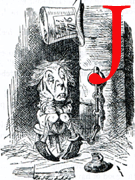
une’s most important news: Joanne Devereux, Assistant Professor at Western University, in London, Ontario, joins us as Assistant Editor for Gender Matters. The month's first contribution from outside our editorial board came from Mike Williams, who sent along “From a Pin to a Steam Engine: Prosser’s History of Birmingham Industrial Patents, a detailed study showing the step-by-step growth of the technologies that created the Industrial Revolution.” J. R. Watson, Professor of English in the University of Durham, kindly shared with us two essays that add add crucial information to our section on hymns within the religion section: “The Victorian Hymn” and “Ancient or Modern, Ancient and Modern: the Victorian Hymn and the Nineteenth Century.”
Your webmaster added two examples of Punch’s racist attacks on those wanting justice in the Eyre Affair — “Library of Fiction” (Review of The Reign of Terror in Jamaica and “Chamerobzoh. (A Negro Melody.)”— and the preface to Henry Bleby’s The Reign of Terror in Jamaica. Next came Punch’s London’s Nightmare, which uses Oliver Twist’s Bumble to satirize obsolete, entrenched local government. Continuing to use the riches of the Hathi Trust, Landow transcribed and formatted two Punch poems mocking Tory resistance to extending the right to vote: “ Reform Bill is coming, oh dear! oh dear! A Cry from the Conservative Party” and “The Reform Bill Done into Hiawathan Verse by Mr. Punch.” In addition, on Punch’s views of gender matters saw new material, which includes a funny cartoon on lady novelists and sensation novels supposedly unfit for daughters, Needle Money, a protest about the poverty and working conditions of seamstresses plus the story of Tom Hood’s “Song of the Shirt.” On the less pleasant side, we have the “Great Reform Meeting. By Our Own Reportress,” a supposed record of a meeting about female suffrage filled with condescension.
Jackie Banerjee opened a new section on the pioneering journalist and women's activist, Emily Faithfull, dealing with her successful initiative, the Victoria Press, and her powerful call to action, entitled Women's Work. While adding paintings as illustrations for new contributions, she opened a new section on the military painter, Orlando Norie, gave some extra information on Louis Desanges, and included several other new paintings from the National Army Museum in London, such as this one of mutinous sepoys being alerted to an attack. On a quieter note, she started a section on the artist Joshua Hargrave Sams Mann, although it was hard to find out much about his life. The life of the etcher and author Lucy Brightwell is better documented, and it was a special pleasure to include a short piece about her by Michael Blaker, R.E., who sadly passed away in November 2018: many thanks to Catriona Blaker for permission to do so. heir subsequent correspondence led JB to include Michael's knowledgeable piece on the sizeable number of French etchers involved in the early days of the Royal Society of Painter-Etchers and Engravers. She also opened a new folder on the prolific engravers, William and Edward Francis Finden. The rest of the month passed in writing about Petworth House in Sussex, and some of the many works in its art collection, including John Flaxman's Pastoral Apollo and John Edward Carew's Adonis and the Boar. A favourite among the large number of Turners there (already on our site) is The Confluence of the Thames and the Medway.
Among the other very welcome contribution this month were Rita Wood's, about the architect J. P. Pritchett's Lady Hewley’s Almshouses, at St Saviourgate, York; and Paul Goldman's account of the artist and illustrator, Eleanor Vere Boyle, for which Simon Cooke scanned and discussed about a dozen illustrations. The most attractive are probably the ones for Hans Christian Andersen's Fairytales, like this one of Tommelise on the swallow's back. Later in the month, Colin Price sent in some extra photographs of LLandudno Pier, starting a new series on these Victorian seaside structures, including those at Bangor and Mumbles, and one at Cromer. At the end of the month came a long overdue piece on Robert Owen, from Penny Harris, whose book on Owen and the architect Joseph Hansom will be out later this summer. JB provided some illustrations, such as one of Hansom's splendid but ill-fated Harmony Hall in Hampshire.
Three Emeritus Professors made new contributions to the website: Amitav Banerjee sent in a review of William Dalrymple's The Last Mughal: The Fall of a Dynasty in Delhi, 1857, which throws so much light on the other side of the uprising; and Robert Fraser sent in his very insightful and enjoyable reflections (including his own poems, and a moving choral performance of one of them) on selected paintings in the Royal Holloway Picture Gallery's collection. This was an unusual multi-media project, and we're grateful to all concerned for the necessary permissions. Lionel Gossman, M. Taylor Pyne Professor Emeritus of Romance Languages, Princeton University, has contributed a book written especially for the Victorian Web: The History of Jews in Great Britain. Thus far the first four chapters are online: “The Middle Ages until Expulsion (1290),” “The Reformation, Cromwell, the Commonwealth, and Readmission of the Jews,” “he Restoration, Glorious Revolution, and Enlightenment,” and “The ‘Jew Bill’ of 1753.” In addition, Susan Matoff has shared her book about William Jerdan and Letitia E. Landon: Conflicted Life:William Jerdan (1782-186): London Editor, Critic, & Author. Thus far 10 chapters are online. Prompted by Matoff’s book, Landow has created a section on Landon.
The Oxford & Cambridge Club reports that the Victorian Web has proved a "wonderful resource" for its "Library Matters" newsletter during lockdown. Thanks!
Thanks to Philip L. Stein, who did the HTML formatting in Mary Jean Corbett’s important review of James H. Murphy’s Irish Novelists and the Victorian Age and Peter Mallios’s Joseph Conrad's Contemporary Reviews both of which Review19 has shared with us. Bill McKelvy of Washington University in St. Louis wrote in to correct a typo. Thanks!
The website kaszinoonline.net translated “Victorian and Victorianism” into Hungarian — the nineteenth language in which some of our material has appeared.
May 2020

ay begun with your webmaster completing rescans of many of George du Maurier’s Punch cartoons. Then, after reformatting and adding commentaries and series of links to 170 of them, he added another dozen new cartoons. He next spent several days similarly upgrading our section of 150 cartoons of Charles Keene, after which he expanded the section on Linley Sambourne with a forty cartoons and commentaries, after which he wrote “Punch on Whistler and Burne-Jones after the infamous Ruskin-Whistler Trial.” Next, he created a sections on Punch cartoons about Benjamin Disraeli and women’s dresses, coiffures, and jewelry, linking it to material in our sections on costume and jewelry.
Finding time during lockdown, Jackie Banerjee worked with a large set of photographs from contributing photographer John Salmon, to write about St Peter's Church, Bournemouth, one of the most important Anglo-Catholic churches of the later Victorian period: its main architect was G. E. Street, and its interior (especially the Keble Chapel) is exceptionally rich in decoration and fittings. Stained glass windows designed by Street himself, and by Edward Burne-Jones, William Wailes, Alexander Gibbs (probably), Percy Bacon and Clayton and Bell (to give just one example of each), add to the colour and significance of the church. She also wrote a brief introduction to one of Caroline Norton's sisters — the author and, in one case, illustrator, Lady Dufferin. The rest of the month went on creating a new section for George Borrow, with a biography, a discussion of his literary legacy, and samples of three of his best-known works, The Bible in Spain, Lavengro and Wild Wales.
Philip V. Allingham and Landow worked together on more than 100 of Charles Green’s illustrations for Dickens’s Christmas Books.
Andrzej Diniejko, our contributing editor from Poland, continued his work on Disraeli, adding “Benjamin Disraeli and the Jewish Question in Victorian England.”
Drawing together artwork from many sources, Simon Cooke contributed a full-length and very handsomely illustrated article, "The Mistake of Going on Holiday: Travel, Tourism and Leisure in Early and Mid-Victorian Illustration." This includes new illustrations by George Cruikshank, Richard Doyle, "Phiz" (Hablot Knight Browne) and Lady Dufferin — again, these links lead to just one example of each. He went on to write about the illustrator John Sliegh, including some new illustrations of his work, and updating and extending an earlier essay on Sleigh's bookbindings.
Stephen Basdeo contributed “The Difference between Lantern and Lanthorn” and “Napoleon’s Surprising Popularity in Nineteenth-Century England.” Mike Williams contributed “Kingsley, Millar, Chadwick on Poverty and Epidemics” and “Kingsley, Industrialization, and National Degeneration.” Many thanks also to Brigid Allen for beginning a new section on the author Emily Eden, with an essay entitled "Prospects of India: Emily Eden and her brother Lord Auckland, 1830-35."
Dave May kindly wrote to point out an incorrect image in our section on agricultural technology, and Nick Thomas-Brown also corrected a point in one of our 17-year-old student essays. Thanks to both! Courtney Maheny e-mailed to report that she has been unable to use the Firefox browser to use this site. Which Browsers work best with The Victorian Web? This site has been formatted to work best with Safari and Chrome, both of which are available for Macintosh and Windows operating systems.
April 2020
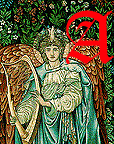
pril began with your webmaster completing work on the “Ruskin’s Venice” project, after which he created a small set of networked documents comprising Swinburne’s criticism of Lord Byron, William Wordsworth, Matthew Arnold, and Charles Reade. Continuing to experiment with creating networks of an author’s comments, Landow next added several of Henry James’s comments about London, including “London and Paris Compared,” “The Romance of a Winter Afternoon in London,” “The Fog, Smog, and Skies over London,” and “London melts by wide, ugly zones into the green country.” Ruskin’s Venice may be complete for now, but Ruskin keeps coming to mind in “Ruskin on the “Darkness and Mystery, the Stage Properties of Superstition” and “ “There is no sacredness in round arches, nor in pointed”: Ruskin on Gothic Architecture and Religion.”
Realizing that many of the Victorian texts on the site did not appear in “Victorian Texts in the Victorian Web,” your webmaster has added a dozen and a half missing authors, including Charles Dickens and Oscar Wilde as well as lesser known ones, such as Lord Dunsany, William Hope Hodgson, and William Brighty Rands. In addition, he added Albert Bruce-Joy’s Memorial to The Right Honorable Gerald Fitzgibbon, Lord Chief Justice of Ireland and addiitonal photographs to the same sculptor’s Memorial to James Whiteside, an earlier Chief Justice. The 1864 Illustrated London News provided an image of Dublin’s Winter Garden and Exhibition Building and William Theed, Junior’s statue of Prince Albert at Balmoral. Mining old materials stored on his computer, your webmaster then added several piece of Mackintosh furniture to the architect-designer’s section. During the last week or so of the month Landow began rescanning the cartoons from George Du Maurier’s English Society, reformatting the documents, and adding both commentaries and links to cartoons on the same subjects. By the 30th 70 of these delightful cartoons went online.
Thanks once again for the Mass Gallery for sharing their images and information with our readers. Philip Hermogenes Calderon’s The Fruit Seller, Edward Wiliiam Cooke’s Vesuvius, Augustus L. Egg’s A Cottage Garden, Andrew MacCallum’s The Fire at Clerkenwell, July 28 1876, John William Godward ’s Sketch for Amaryllis and After the Serenade, Keeley Halswelle’s The Needles, Isle of Wight, Frank Holl’s The Blacksmith's Rest, Arthur Hughes’s Night Toilers, Fresh Sea Breezes, Benjamin Williams Leader’s The Carnarvonshire Coast, William Blake Richmond’s A Centaur by Moonlight, Morea and Landscape at Sunset , Thomas Matthews Rooke’s Phyllis Deserted - Become the Spirit of the Almond Tree, Sidney Herbert Sime’s Hast thou, spirit, Perform'd to point the tempest that I bade thee?', George Francis Teniswood’s Twilight on the Avon, Ruins of Kenilworth Castle in the Distance, and Charles William Wyllie’s Southampton Water.
Philip V. Allingham created revisions and expansions of his essays on the illustrations of Charles Green of Dickens’s Christmas, in the process of which revisions he expanded many of his older commentaries on Thomas Nast, Phiz, and other illustrators of these works. Of particular interest how the 1912 illustrations of The Haunted Man turn it into a different kind of work.
This month Jackie Banerjee has been continuing to work with Rita Wood on the Victorian architecture of York, discussing for example the former Yorkshire Club with its notable tiling, and the Museum Lodge, which your webmaster had photographed in passing, on an earlier visit. One of the new pieces is about the dazzling mosaic of the Ascension, in St Andrew's, Kirby Grindalythe, in the East Riding. As well as opening a new section on the diarist Francis Kilvert for Simon Cooke's essay (see below), she added excerpts of his work with commentaries, and opened another new section for the diarist Arthur Munby — and then a general one for diarists, which she hopes will encourage more contributions. The diary commentaries so far have brought in some interesting new material, like Thomas Allom's illustrations of Claremont in Surrey, which Kilvert visited and reported on in great detail.
Later in the month she discussed two topics inspired by Munby's diaries: Arthur Munby, Cross-Dressing and Lesbianism, and Arthur Munby's Encounters with Ruskin. She also included a sympathetic discussion of Queen Victoria's diaries, by Arthur Ponsonby. Her most exciting finds were a gilded bust of a youthful Prince Albert on the Brighton Museum and Art Gallery website, by Baron Marochetti — and a Parian ware copy of it at the V & A.
Simon Cook contributed a “Francis Kilvert and the Pre-Raphaelites,” which prompted Jacqueline Banerjee to create a section on him along with a biography and excerpts from his diaries. Making full use of his access to the Gleeson White archive at the Houghton Library, Harvard, he also wrote essays on Gleeson White's applied arts: on his bookplates, and on his monograms, adding several examples of each, such as a bookplate for his daughter, Cecily Rose, and a monogram with a tulip design for himself.
Thanks to Sheldon Goldfarb for sharing with our readers his post on Victoria: “A Textual Error Hides Thackeray’s Attack on the Victorian Religion of Commerce.” Many thanks to Joanna Williams for sending in an extract from her recent book, dealing with the artistic decoration of Manchester Town Hall, and Ford Madox Brown's part in it. This month we also have a new contributor, Simon Wenham, who teaches in Oxford University’s Continuing Education Department and who contributed “The Great Exhibition of 1851” and “Life in the Time of Cholera: How the Victorians Dealt with Epidemics.’
Thanks to the Liss LLewelyn Gallery for sharing both an image of William Strang’s Seated Nude and a discussion of his work in metalpoint graphics.
SFEVE (Société Française d’Etudes Victoriennes et Edouardiennes) has shared the announcement of what appears to be a particularly interesting conference, Popular forms and practices of reading and writing in the Victorian and Edwardian periods.
Thanks to Otis Tyler for reporting a typo in a passage in the John Stuart Mill section.
March 2020
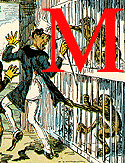
arch began with your webmaster reaching the last corrections and updates to material in the sculpture section. Whew. Then, as the Coronavirus pandemic became known, he and Ruth were forced to cancel our three-week trip to London, where we had planned to meet with Jackie Banerjee and Simon Cooke, who've both been very busy with contributions, editing, and corrections. Cynthia Gamble has kept Landow busy by contributing two monographs that derive from her John Ruskin, Henry James, and the Shropshire Lads (2008): John Ruskin and his Oxford Tutor, Osborne Gordon and Henry James and the Ruined Abbeys of Shropshire.
Bob Freidus, our London-based contributing photographer who specializes in sculpture and architecture, returned from Venice with hundreds of pictures that Landow edited, fixing perspective, color, and contrast and adding passages from Ruskin. Thus far the project has produced a set of forty sets of photographs and Ruskinian commentary about Venetian palazzi and the beginnings of one on Venetian churches. Once Landow began working with Freidus’s photographs, he decided to create galleries of photographs of flooded Venice and the city’s bridges from ones he himself had taken in twenty years ago when one of the Venetian universities invited him for a week to peal about distance learning and the internet. (How time flies!)
Philip V. Allingham completed work on hundreds of Harry Furniss’s illustrations and turned to revising those by Arthur Rackham and Charles Green.
Jackie Banerjee would like to acknowledge some very welcome contributions. Philip Pankhurst sent in a fine set of pictures of architect Henry Woodyer's St Michael's Church and College, Tenbury Wells, Worcestershire. Rita Wood also sent in photographs of several places in York distinguished by their use of architectural ceramics and terra-cotta: the former Club Chambers and Drill Hall, and the York Dispensary and solicitors' offices. The latter led JB to explore the life and other work of its noted Liverpudlian architect Edmumd Kirby, who also designed York's city centre Barclays Bank, and much more besides. Particularly pleasing was the little Church of the Holy Name of Jesus that Kirby built beside his own home in Birkenhead. More difficult to arrange and discuss was a batch of photographs of the Golders Green Crematorium in London, sent in some time back by our own contributing photographer Robert Freidus. JB ended up by going to see the crematorium for herself. Many thanks to historian Eric Willis who kindly showed her round the chapel and columbaria interiors and pointed out some of the famous urns and memorial plaques there (ranging from Freud's to Anna Pavlova's)
Later in the month, she opened a new section on Jules Bastien-Lepage, the young French painter who influenced British contemporaries like Sir George Clausen and Sir John Lavery, and who visited England frequently, painting, for example, The London Bootblack and an acclaimed portrait of Sir Henry Irving.
Simon Cooke sent in a deeply considered and handsomely illustrated essay: "Art Nouveau Bindings: Designers, Styles, Influences, and Publishers," followed by an updated and much expanded version of his piece on Rossetti's book-cover designs.
Tim Willasey-Wilsey sent in photographs and information about George Blackall Simonds’s The Maiwand Lion in Reading and The Royal Berkshire Hospital, Reading, Berkshire.
Rita Wood continued to send in her very welcome material on Victorian buildings in York, such as the attractive Museum Lodge on Museum Street, and Antoine Capet, reviews editor of the online journal Cercles, gained Peter Mandler's permission to share with us Mandler's review of The Metaphysical Society (1869-1880): Intellectual Life in Mid-Victorian England, ed. Catherine Marshall, Bernard Lightman and Richard England. Andrew Rossabi, who is writing volume two of his biography of Richard Jefferies, provided some useful additions to our bibliography for that author, and Colin Price contributed a photograph of the lovely "Consider the lilies" window in Bodelwyddan Church, Clwydd.
Thanks to Sarah Colgreave for sharing images and information about works in her gallery, including George Howard’s Freiburg From Johannisberg Nauheim, three works by Henry Scott Tuke, RA (Resting, Tying Sails, andPortrait of Thomas Cooper Gotch).
A contributor's query led to our inclusion of a rather special window by Clayton and Bell: Jacob's Dream. We wonder if anyone knows what became of its partner, The Chess Players, formerly at Ardmiddle House, near Turriff in Aberdeenshire?
February 2020

ebruary began with your webmaster continuing to work his way through the 4,800 HTML documents in our section on sculpture, adding crucial links, updating materials, and correcting typos, and the task was completed by the last day of the month. The work involved converting documents that had only a single image linked to multiple ones containing variants of the main image into galleries of images or photo-essays containing them. In addition, many of the older images, particularly those photographed or scanned from nineteenth-century periodicals and books, needed improvement to contrast and brightness.
Philip V. Allingham contributed three dozen discussions of Harry Furniss’s illustrations for Oliver Twist, which included substantial essays comparing individual plates by Furniss to those by George Cruikshank, Felix Octavius Carr Darley, Sol Eytinge, Charles Pears, and F. W. Pailthorpe.
Before leaving for India, Jackie Banerjee discussed Valentine Cameron Prinsep's huge canvas, The Imperial Assemblage held at Delhi, 1 January 1877. This is in the Royal Collection, images of which have now become available for scholarly purposes (be sure to check their website before using, though). On return, prompted by a query on Twitter, she wrote about William Whiting's hymn, "Eternal Father, Strong to Save," the melody for which was composed by John Bacchus Dykes. With Colin Price's help, she also added a commentary to his photograph of Heaton, Butler and Bayne's stained glass window depicting the "Miraculous Draught of Fishes" at Leicester Cathedral. Marie Spartali Stillman's Madonna Pietra degli Scrovigni, from the Walker Gallery in Liverpool, is another new addition to the painting section.
Many thanks to Joe Pilling for his review of Eleanor Fitzsimmons' The Life and Loves of E. Nesbit.
We now have 10.2K followers on Twitter, some of them very engaged — quick to comment, share their research, suggest new topics, etc. Thank you to all of them!
January 2020

The new year and new decade began with your webmaster beginning to make his way through our tens of thousands of documents in order to make sure that all of them, especially those created back in 2002, matched our current style sheet and HTML rules. After the first dozen days of work the sections on etching, engraving, and other graphic arts as well as those for mosaics, stained glass, technology, and most of book illustration have seen completion. Jackie Banerjee (whose off to India again) began work on the parks and cemeteries section, and Diane Josefowicz worked on History, Science, and Technology and has begun the large section on painting. Landow has spent several ten-hour days and several shorter ones on the sculpture section, and now is only at sculptors whose names begin with the letter F.
Carrying out a New Year's resolution, Jackie Banerjee wrote about some of the pictures that had long been sitting on her desktop: a former infants' school and a hotel in her own neighbourhood, both attractive late Victorian buildings; the Portland Bill lighthouse; and Edward Lear's painting of Butrinto, Albania. She also added a short piece on Arthur Clough's contemporary reputation as a poet, and opened a new section on the artist (Ann) Mary Newton, with a biography of her all-too-brief life. Her favourite works by Newton were her Self-Portrait, and her View of Naples. Many thanks to Caroline Murray, who contributed a fascinating piece on Newton's family connections (she was the sister of Arthur Severn): "From the Spanish Steps to Munstead Wood."
Later this month, Rita Wood sent in some pictures of the grand display of late Victorian Arts and Crafts work in the Royal Arcade, Norwich. This necessitated opening a new section for designer W. J. Neatby, with a contemporary account of his life and work. Thanks also to Colin Price for his lovely interior photographs of St Marie's, Sheffield, with its splendid stained glass windows by Pugin/Hardman and George Goldie/William Wailes. Thanks to Colin also for his picture of the attractive Gothic Buttington Bridge over the Severn to Powys.
Simon Cooke has contributed an essay on Gleeson White’s book designs with 10 images, many from Harvard University’s Houghton Library, where he carried out his research project.
Thanks to Joshua Gooch, Associate Professor, D'Youville College in Buffalo, New York, for sharing (and formatting) substantial portions of his Palgrave Macmillan book, The Victorian Novel, Service Work, and the Nineteenth-Century Economy. These include “Productive and Unproductive Labor in Victorian England,” “Banking, Finance, Service Work and the Growth of Victorian Financial Markets,” and “Service Workers in Victorian England.”
Thanks to Louise Hope for writing about a broken link and a no longer extant site.
Last modified 5 January 2024